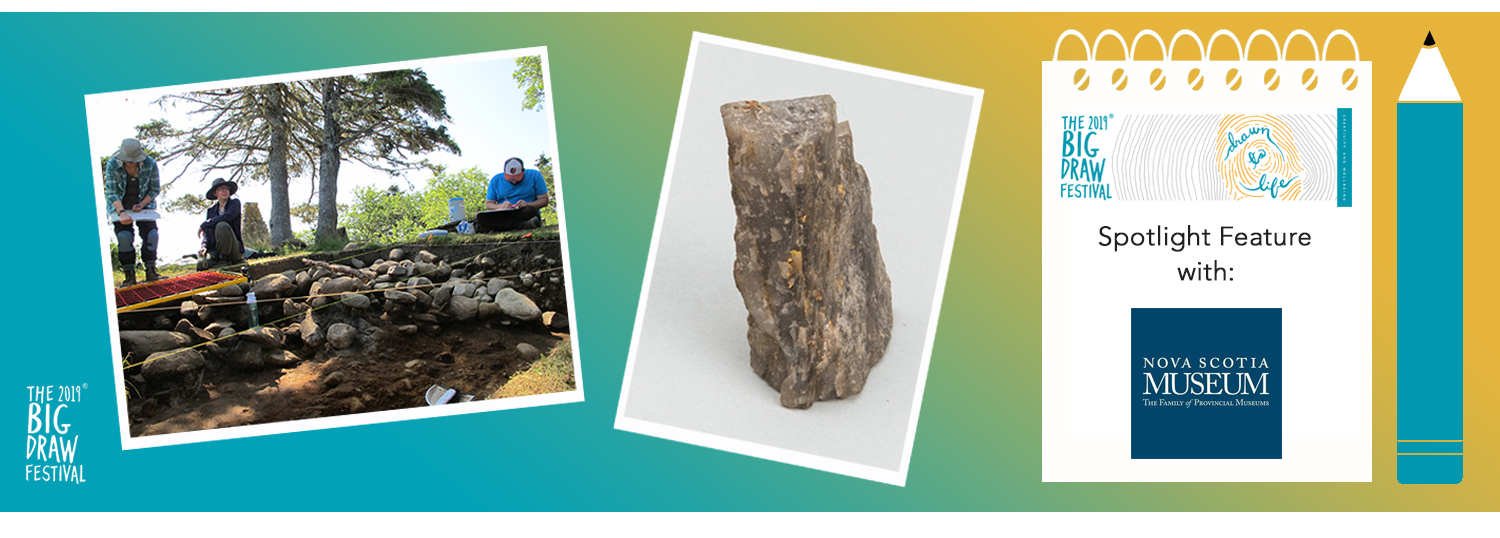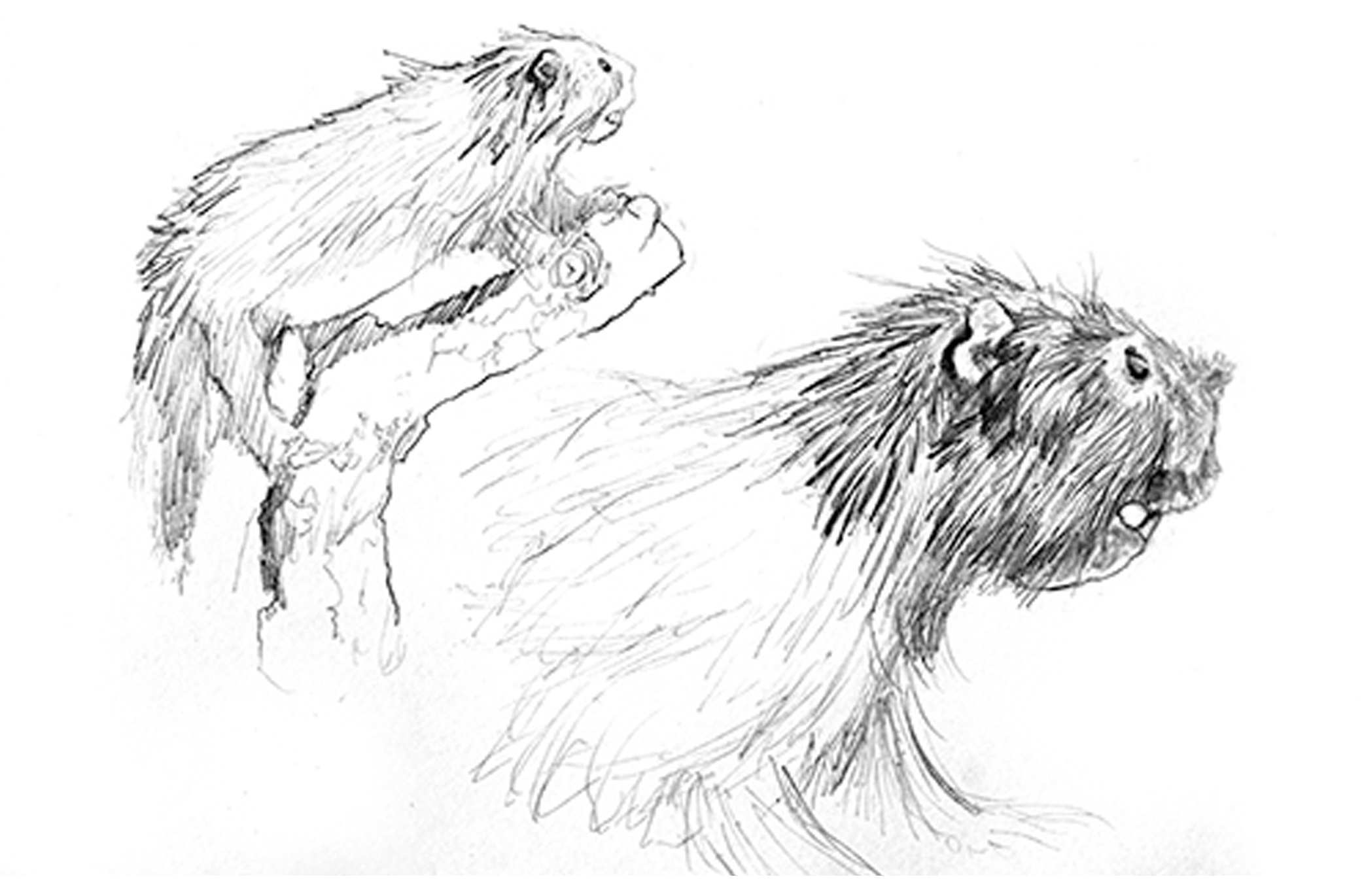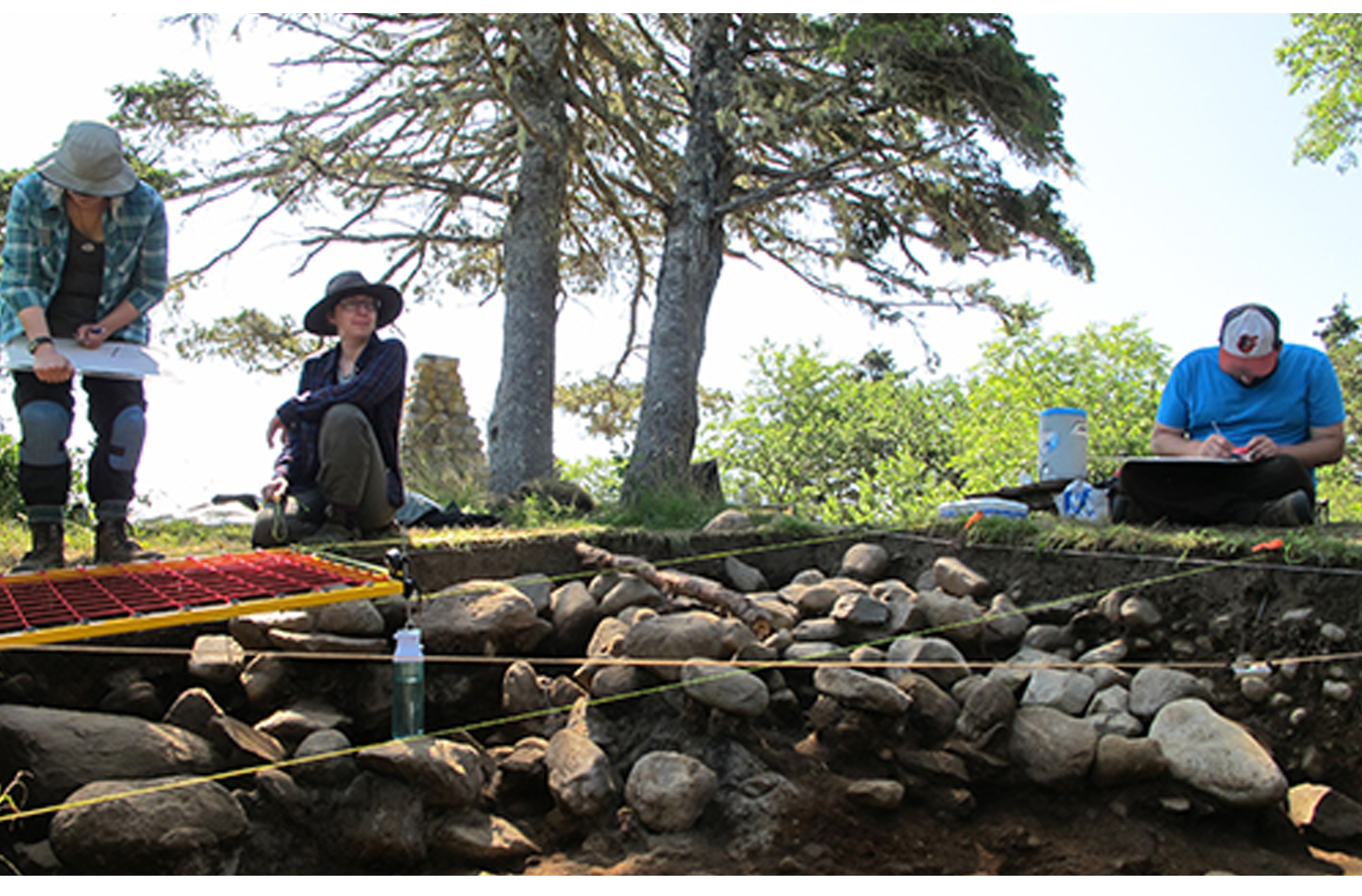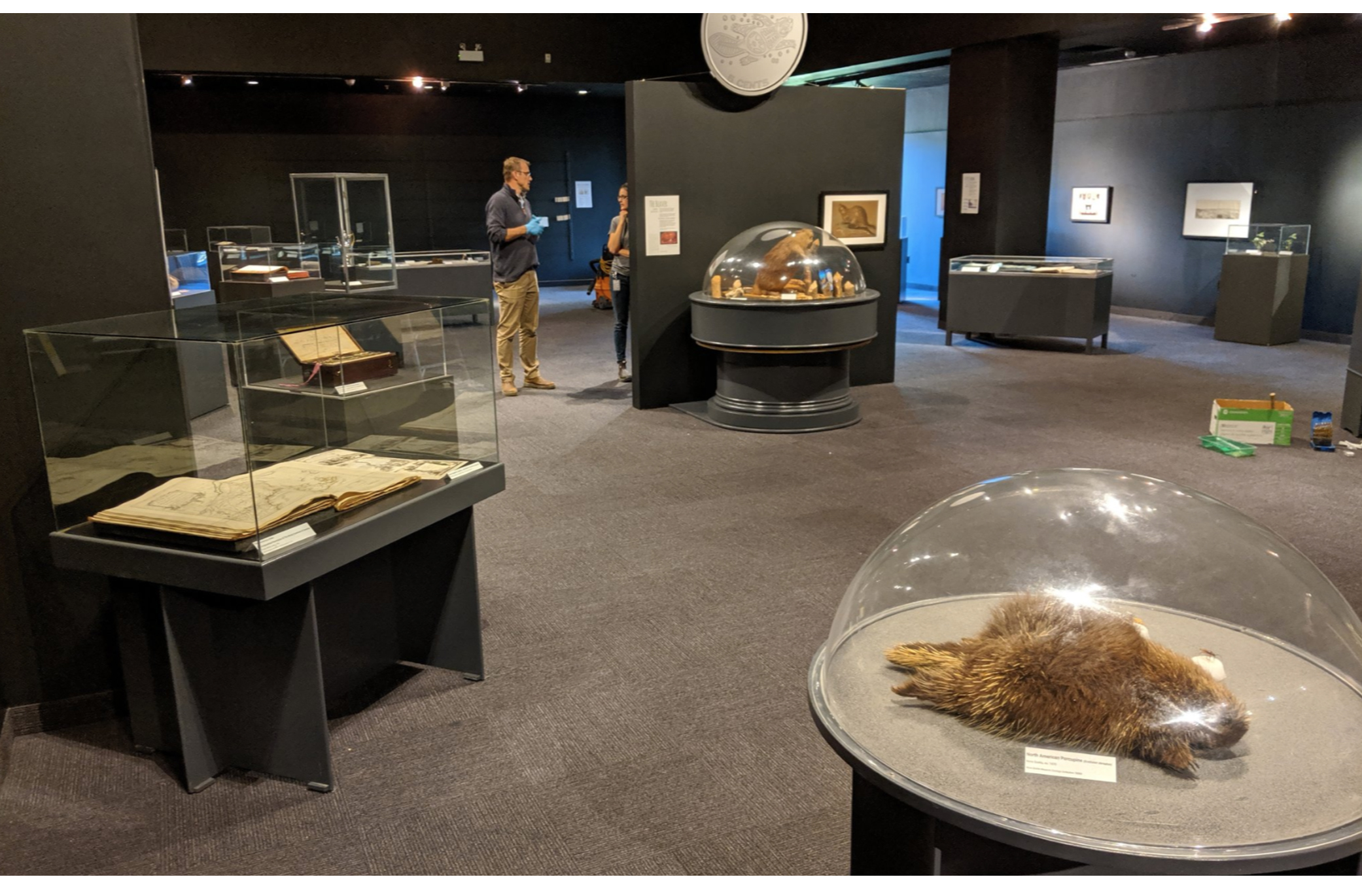We are thrilled to be catching up with Tim Fedak, Curator of Geology at the Nova Scotia Museum, to talk all-things-drawing, and the role of 'Drawn to Life' in the Museum's programmes...

Hi Tim! Thanks so much for taking the time to chat with us in the lead up to your Big Draw events. Could you start by telling us a little bit about the Nova Scotia Museum and your work there as Curator of Geology?
"Well, like other curators here at the Museum - I think I might just have one of the best jobs in the world. As Curator of Geology I’m responsible for the fossils, minerals, and historical geology collection of the Nova Scotia Museum - one of the oldest provincial museums in Canada. I get to do everything from field work to collect Jurassic dinosaur bones, to working with visiting researchers studying fossil starfish or spectacular agate specimens.
The Nova Scotia Museum formed in 1868 based on the collections established by the earlier Halifax Mechanics’ Institute (1831-1860), so the Museum geology collection includes material from the dawn of modern geology. The Geology collections include a Mastodon femur discovered in Cape Breton in 1834 and carboniferous fossils that were so important to Charles Lyell and his visit in 1842. The collection also includes more recently collected bones of the oldest dinosaurs in Canada that are found in the sandstone cliffs of the Bay of Fundy. I’ve even recently written a blog post about a specimen of gold quartz from Nova Scotia and John Ruskin!
The Halifax Mechanics’ Institute had an active influence on the local community, promoting the sharing of books, scientific equipment, and sharing information through talks and papers. It was the foundation of the Provincial Museum (now the Nova Scotia Museum), as well as the Provincial Library system and the Nova Scotian Institute of Science(1862, NSIS) that remains active today. Today, the Nova Scotia Museum is a family of 28 museums located across the province and includes the Museum of Natural History in Halifax."
This is the Nova Scotia Museum’s first year taking part in The Big Draw Festival - we’re thrilled to have you guys on board! What are some of the reasons that you decided to get involved, and what do you hope to achieve? How might the Nova Scotia Museum incorporate ‘Drawn to Life’ into it’s Big Draw events and programming?
"Being involved in the Big Draw this year has already been a great experience. We decided to participate and began reaching out to collaborators in the community earlier this year. We connected with the Nova Scotia College of Art and Design (NSCAD) Drawing Lab, a group of drawing education researchers from NSCAD and Dalhousie Universities. From there we established a series of panel discussions and workshops, and partnered with the Nova Scotian Institute of Science to host Dr. John Kennedy from the University of Toronto. Dr. Kennedy who will give an NSIS Public Lecture on October 7th titled “Drawing by the Blind and Sighted”.
Soon after beginning plans to participate in the Big Draw, our Museum’s Collections Group then began discussing building an exhibit that would highlight the importance of drawing. Martin Hubley, the Curator of the History Collection, and I outlined an exhibit development plan at the end of May. Since this initial plan we have many of our colleagues from curatorial to exhibit design become inspired and engaged in the exhibit development. Everyone is very excited.
“Drawn to Life: Understanding Your World through Drawing” will be installed on September 21 at the Museum of Natural History. The exhibit features historical specimens and drawings from the Museum’s collection as well as some items borrowed from other institutions. Developing the exhibit has provided an opportunity to build new relationships and collaborations; for example the NSCAD Library is providing several items from the Donald Soucy Early Art Education Collection of books from their Special Collections."

"Plans continued to develop through the summer and a connection was made with the Dalhousie Medical Humanities Program with an art exhibit “Seeing the Patient” created by Dr. Mark Gilbert. We are pleased that this exhibit will be included in this year’s Big Draw events at the Museum of Natural History. The paintings created by the artist and phenomenological research that resulted from their project provide an understanding of what it is like to live with epilepsy. The project fits so well with the Big Draw and Drawn To Life – using art and creativity to promote wellness.
The planning and development of the Big Draw events at the Nova Scotia Museum have already provided an opportunity to build valuable collaborations with those in the region interested in the junction between art, science, wellness and creativity. Everyone is very excited with the schedule of events and exhibits."
There is such a close relationship between viewing and drawing – we firmly believe in ‘drawing to learn, not learning to draw’. I imagine that visitors are often inspired to take pencil to paper by the Nova Scotia Museum’s extensive collections! Do you believe that drawing is an essential tool for better understanding science, history and the world around us?
"The Drawn to Life: Understanding Your World Through Drawing exhibit at the Museum of Natural History will showcase the importance of drawing to learn. We have included natural history and cultural history specimens that demonstrate the importance of drawing for adults and children, artists and scientists, historically and still today.
Through the exhibit we also hope to encourage people to be inspired to draw in the Museum gallery – to examine specimens and displays more carefully, and to share their drawings in the exhibit as well as online. We hope the exhibit will inspire visitors to slow down, observe, and draw more."

Our theme for this year’s Big Draw Festival is ‘Drawn to Life: Creativity and Wellbeing’. We want to address the ongoing issue of mental health, and celebrate the transformative effect that the arts can have on our emotional and physical wellbeing. Are there any moments in your life that you can point to where the humble pencil has helped you through a difficult time?
"As a scientist and museum curator, I use drawing frequently in my professional work. Drawing helps me to look more carefully and think creatively about the objects and topics I am studying. I use drawing in my field notes and in my lab journals when studying fossils in detail. I do take photographs, but drawing remains an important tool for me to observe more carefully and see details that I would otherwise not have noticed.
Over the past several years I have also offered workshops to undergraduate students to encourage them to use drawing for their personal learning. Through those workshops I have had an opportunity to reflect on the ‘other’ values of drawing in science and related professions. The activity of drawing provides a slower tempo that encourages reflection and helps to reduce stress. When I held drawing workshops at a medical school, I found that students appreciated the chance to draw displays in the Anatomy Museum for their learning but also valued the slower tempo as a break from their busy education schedule. Drawing helps us to slow down and take time to observe the details of what is before us. It helps us to see more fully and to feel more at ease because of the tempo and nature of drawing."
Could you tell us a little bit more about your plans for this year’s Big Draw Festival, and why people should get involved?
"The Nova Scotia Museum has established an exciting program of events and exhibits for this year’s Big Draw Festival. Two exhibits will be at the Museum of Natural History, the new Drawn to Life: Understanding your World Through Drawing exhibit and “Seeing the Patient” artwork by Dr. Mark Gilbert. Also, throughout the month of October there will be a series of events at the Museum of Natural History.
Oct. 2 from 7-9 pm - Opening Celebration
Oct. 7 at 7:30 pm – Nova Scotian Institute of Science Public Talk, Dr. John Kennedy, Drawing by the Blind and Sighted
Oct. 16 from 7-9 pm – Education Research Panel Discussion, NSCAD Drawing Lab
Oct. 30, from 7-9 pm – Understanding Your World Through Comics and Graphic Novels
We also hope that local drawing studio classes and other school groups will visit the Museum during the month of October to take in the exhibits and spend time drawing in the gallery. We will be encouraging visitors to share their drawings with the hashtags #DrawntoLife and #NSMdraw"

Finally, we believe that creativity stretches far beyond the realm of visual arts, being a vital tool to a multitude of careers. As someone whose work crosses the bridge of science and art, what would you say to a person that believes the two cannot be intertwined?
"Without a doubt, drawing and creativity are important across a wealth of professions. From natural scientists, to doctors, engineers and architects, we all use drawing in our professional life to study, create and discover new things about our world. Some of the historical drawings on display are by individuals who were both artists and engineers, or artists and botanists, such as John Elliott Woolford or Maria Morris Miller, who combined both science and art throughout their careers, as well as more contemporary examples of the same crossover between the two such as sketches by the Museum’s archaeologists, or the architectural drawings of Arthur W. Wallace of heritage buildings in Nova Scotia. Clearly drawing can, and does, bridge the worlds of the sciences and art, and can lead to better understanding between the two."

Thank you Tim and the team at the Nova Scotia Museum!
The Nova Scotia Museum is one of our Big Draw Festival 2019 Sponsor Partners.
Have you been inspired by Tim's interview and The Big Draw Festival 2019 theme: #DrawntoLife? Why not join our global Festival in 2019? Registration is now open! Find out more about the benefits of becoming an organiser here and other ways to support The Big Draw's mission here.
